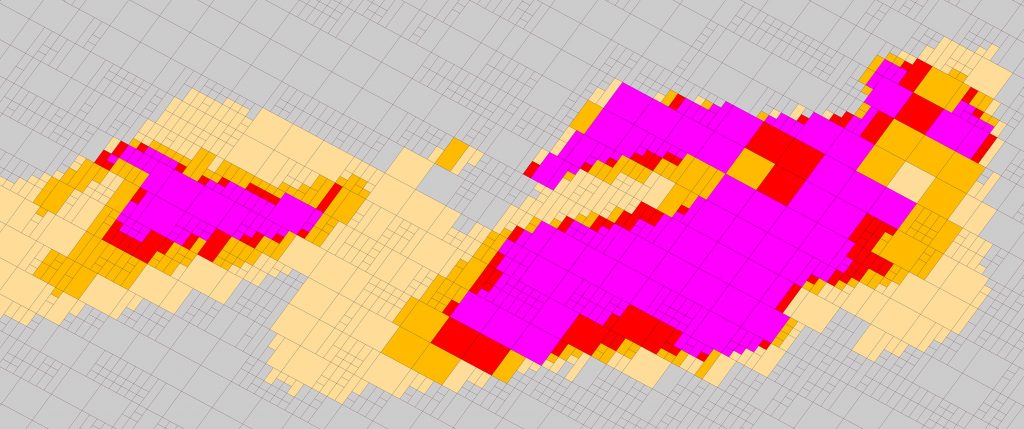Make it simple to make the grade
Machine learning techniques have proved their worth in rapidly modelling domains direct from a validated geological database. Now attention has turned to grade trends.
The 2022 release of DomainMCF raises the bar for data-driven model generation. New functionality incorporates prediction of numeric variables in the block model output.
Numeric attributes could represent analytical grades from a chemical laboratory such as gold grades or coal quality, or they could be geometallurgical or geotechnical variables such as bond index or rock mass rating. Numeric data is included with the relevant domain code.
Don’t ignore missing data
Missing data within the numeric fields must be carefully managed, as not all geological intervals will have valid information for some of the specialised tests. For example, the crucible swelling index number won’t always be measured for metallurgical coking coals, or the potentially acid forming classification won’t be available for ore or mineralised waste material.
The prepared data file is sent to the DomainMCF compute engine for validation, analysis and processing. Domain and numeric data is output as a conventional regular or sub-blocked block model. The geological domain boundaries are predicted in 3D and then the prediction of grade trends is constrained within these geological domains. This is analogous to what are termed hard boundaries in conventional resource estimation practice.

Grade trends generated by DomainMCF display the 3D distribution of any modelled attribute. It may be the distribution of gold or copper grades in stockwork mineralisation or the penetration rate from blast hole measurement while drilling data.
Uncertainty is good
In areas of uncertainty, grade trends can be used to target where to drill and collect data to improve confidence in the geological model.
DomainMCF grade trends can also be used as input to locally varying anisotropy (LVA) estimation techniques. The grade trend vectors in x, y and z replace the standard sample search ellipsoid orientations and facilitate grade estimation around fold hinges and curved domains.
Remember that the grade trends predicted using machine learning are not to be confused with grade estimates for resource reporting.
Future research and development is underway to tune the underlying processes to convert these grade trends to grade predictions.
Learn more about the impact of uncertainty in resource models.



